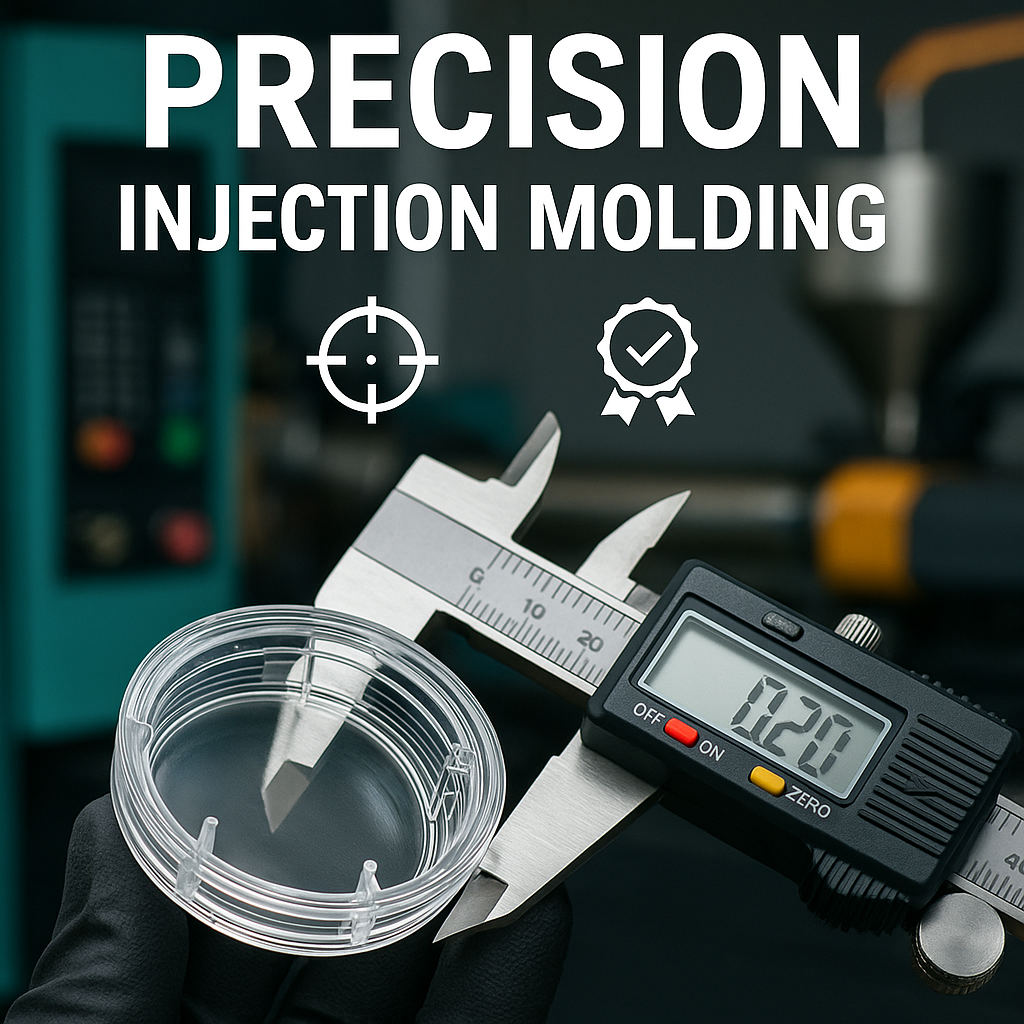Partner with Skilled Injection Moulders for Precise, High-Quality Plastic Parts
Partner with Skilled Injection Moulders for Precise, High-Quality Plastic Parts
When your design tolerances are tight and the end-user’s expectations are even tighter, picking “just any” injection moulder is a gamble you can’t afford. A skilled injection moulding partner turns CAD geometry into perfectly formed parts—shot after shot—while reducing scrap, accelerating launch schedules, and protecting your brand’s reputation. Below is a practical guide to choosing and collaborating with best-in-class moulders, plus the unique advantages you gain when you source through TaiwanMoldMaker.com.
1. What Defines a “Skilled” Injection Moulder?
| Core Dimension | What to Look For | Real-World Benefit |
|---|---|---|
| Engineering Depth | RJG- or Paulson-certified process engineers, Moldflow simulations, thorough DFM reviews | Fewer iterations, faster approval of first articles |
| Tool-Room Excellence | In-house high-speed CNC, EDM, and preventive-maintenance logs | Longer mould life, minimal unscheduled downtime |
| Scientific Moulding Discipline | In-cavity pressure sensors, documented V/P switchover points, CpK > 1.67 | Consistent dimensional accuracy across large lots |
| Quality Framework | ISO 9001 baseline; IATF 16949 or ISO 13485 for automotive/medical work | Traceability and compliance without extra audits |
| Communication & Transparency | Bilingual project managers, 24-hour RFQ turnaround, real-time production dashboards | Smooth collaboration and rapid course-correction |
2. Five Ways Skilled Moulders Elevate Part Quality
-
Optimised Gate & Runner Design – Prevents jetting, burn marks, and unbalanced fill that cause warpage.
-
Precision Temperature Control – Uniform cooling channels minimise differential shrinkage for flatter parts.
-
Material Mastery – Correct dryer settings, screw geometry, and shear-rate management unlock full resin properties.
-
Preventive Tool Care – Scheduled polishing and alignment hold surface finish and shut-off integrity over millions of cycles.
-
Data-Driven Process Windows – Statistical process control (SPC) flags drift before parts go out of spec, slashing rework costs.
3. Evaluating Potential Partners—A Rapid Checklist
-
Ask for a DFM Sample on a past project similar to yours; note clarity and actionable insights.
-
Tour the Plant (or Virtual Walk-Through)—look for 5S practices, machine-maintenance boards, and clean material-handling zones.
-
Request Validation Data (first-article reports, CpK studies) that match your tolerance stack-ups.
-
Confirm Secondary Capabilities (ultrasonic welding, in-mould labelling, clean-room moulding) if your assembly flow demands them.
-
Negotiate SLAs for tool repair response times, scrap thresholds, and shipment OTIF (On-Time In-Full) rates.
4. Taiwan’s Competitive Edge for Precision Plastics
-
Clustered Ecosystem – Toolmakers, moulders, surface-finish vendors, and logistics hubs sit within a few hours’ drive, compressing lead times.
-
Advanced Automation – Industry 4.0 presses with robotic take-out and vision inspection deliver repeatability at scale.
-
Engineering English Fluency – Smooth collaboration on GD&T, PPAP packages, and regulatory dossiers.
-
Balanced Cost Structure – Labor is higher than in ultra-low-cost regions, but offset by shorter logistics, lower rejects, and faster design changes—yielding a lower total landed cost.
5. Collaboration Blueprint—From RFQ to Mass Production
-
Kick-Off & DFM Review 48-hour feedback on wall thickness, draft, gate location, and critical dimensions.
-
Mould Design Approval 2D/3D tool drawings plus Moldflow fill/pack/cool/warp study.
-
Steel-Cut & T1 Sampling 3–6 weeks typical for P20 or H13 tools; 1–3 weeks for aluminium prototype inserts.
-
First-Article Validation Dimensional report, colour and gloss checks, mechanical/functional tests.
-
Process Window Lock-In Scientific moulding documentation + golden-sample archiving.
-
Ongoing Continuous Improvement Quarterly Kaizen to trim cycle time, cut resin usage, and raise OEE (Overall Equipment Effectiveness).
6. Case Snapshot—0.02 mm Tolerance Achieved on Medical Pump Housing
| Metric | Legacy Supplier | TaiwanMoldMaker.com Partner |
|---|---|---|
| Flatness Deviation | 0.08 mm | 0.018 mm |
| Scrap Rate (PPM) | 2 500 | 320 |
| Tool Down-Time / year | 96 h | 14 h |
| FDA Audit Findings | 3 minors | 0 |
Result: Annual cost of poor quality (COPQ) dropped by 54 %, while throughput rose 18 %—all without increasing the piece-part price.
7. Next Steps—Secure Precision Without Compromise
-
Define Critical-to-Quality (CTQ) Features—tightest tolerances, cosmetic zones, mating surfaces.
-
Share 3D Files & Volume Forecast—allow the moulder to propose single- vs. multi-cavity options.
-
Pilot a Bridge Tool—validate quality and communication on a short-run before committing full capital.
-
Lock Service-Level Terms—include response times for ECNs (Engineering Change Notices) and preventive-maintenance schedules.
-
Scale Confidently—expand into family tools or multi-cavity moulds once performance is proven.
Ready to Raise Your Plastics Game?
TaiwanMoldMaker.com connects you with a vetted network of Taiwanese injection moulders who combine cutting-edge equipment, seasoned engineering, and data-driven quality control. Send us your CAD files and quality targets—we’ll match you with a partner who delivers precision and consistency from the first shot to the millionth.
Contact us today and turn exacting designs into flawless, high-quality plastic parts.









